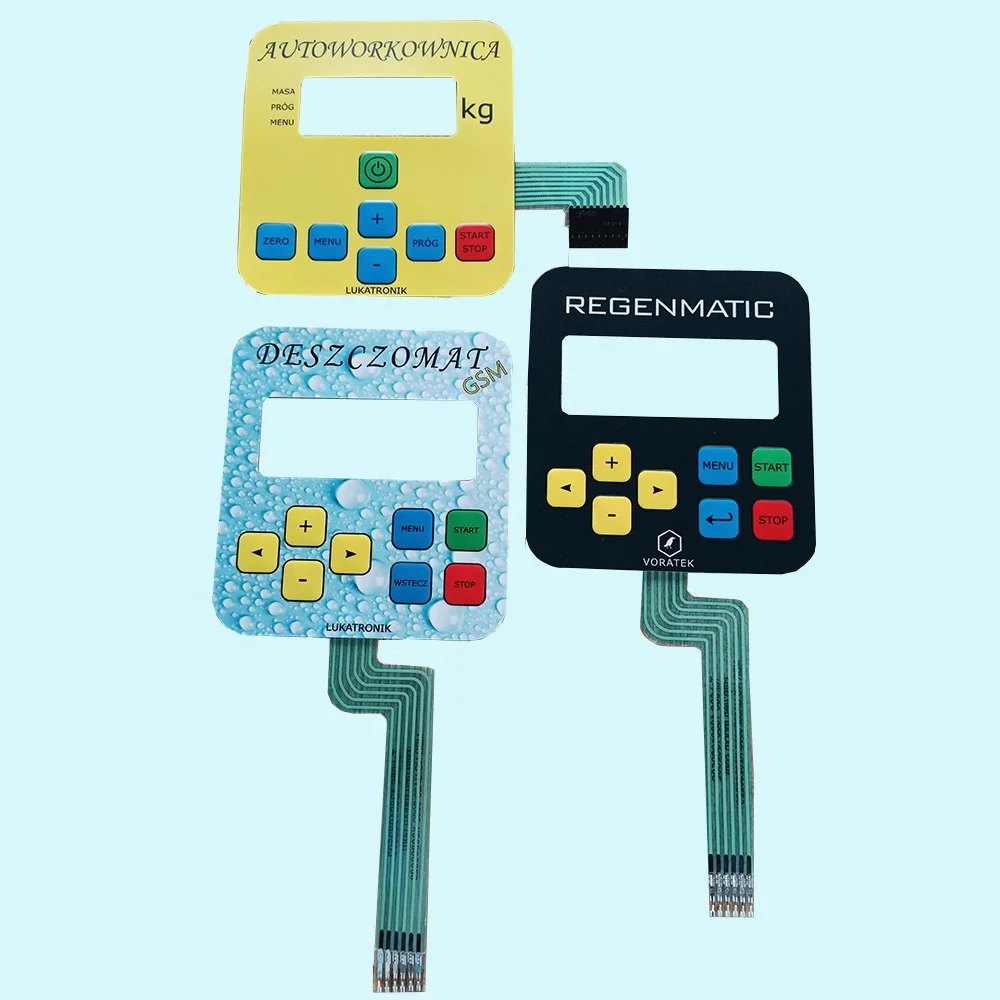Membrane Switch: Reliable, Cost-Effective, and User-Friendly Control Systems
Membrane Switch: Reliable, Cost-Effective, and User-Friendly Control Systems
Blog Article
Understanding Membrane Layer Switches Over: The Key to Durable and Trustworthy Controls

What Are Membrane Layer Switches?
Membrane switches are a sophisticated option in the world of interface technology, combining performance and style effortlessly. These tools work as an interface between users and electronic systems, integrating numerous parts right into a portable layout. Generally built from flexible, thin layers of materials, membrane switches are created to reply to touch, allowing individuals to engage with machinery and digital gadgets successfully.
The main elements of a membrane switch consist of a printed circuit layer, graphic overlay, and a spacer layer that stops unintended activation. The graphic overlay can be personalized to show brand identity or user choices, improving aesthetic appeals while guaranteeing use. Membrane layer buttons are frequently utilized in numerous applications, including medical gadgets, customer electronic devices, and industrial tools, owing to their sturdiness and resistance to ecological aspects such as moisture and dirt.
Among the crucial advantages of membrane layer switches is their capability to endure wear and tear, making them optimal for high-traffic atmospheres. Additionally, they are light-weight and call for very little room, permitting ingenious styles in item development. On the whole, membrane changes represent a efficient and functional option for contemporary electronic interfaces, weding innovation with user-centric layout concepts.
Exactly How Membrane Layer Switches Over Work
The operation of membrane switches over hinges on a straightforward yet reliable mechanism that translates individual input into electronic signals. When a customer presses the switch, the top layer warps, allowing a conductive element in the circuit layer to make contact with a corresponding conductive pad on the bottom of the graphic overlay.
The design of membrane layer switches can differ, yet they usually integrate domes or responsive components to supply responses to the user, enhancing the overall experience - membrane switch. The materials utilized in membrane layer buttons, such as polyester or polycarbonate, contribute to their resilience and resistance to environmental aspects, consisting of moisture and dirt. The printed circuits are typically enveloped, which secures them from wear and tear over time.
Advantages of Membrane Layer Switches

Furthermore, membrane layer switches are recognized for their toughness. Built from robust materials, they are resistant to dirt, wetness, and physical wear, which dramatically extends their life-span compared to standard mechanical buttons. This longevity makes them specifically ideal for high-traffic settings and applications requiring long life.
Another considerable benefit is the ease of cleansing and maintenance. The smooth surface area of membrane layer switches decreases dirt build-up and is frequently invulnerable to spills, making them suitable for settings that require constant sanitization.
Furthermore, membrane layer buttons offer a structured account, leading to a thinner style that can be incorporated right into different tools without including mass. This function not only improves the visual allure however additionally contributes to an extra ergonomic item design.
Applications of Membrane Switches
Easy to use and versatile, membrane layer switches locate applications throughout a large range of industries, including medical gadgets, consumer electronic devices, and industrial devices. In the medical area, these buttons are integral to gadgets such as diagnostic equipment, client tracking systems, and infusion pumps, where integrity and convenience of cleansing are essential. Their capacity to withstand extreme environments and maintain functionality makes them optimal for such applications.

In consumer electronic devices, membrane switches are used in items like microwaves, cleaning machines, and remotes - membrane switch. Their sleek design permits instinctive interface, improving the general user experience while offering durability and resistance to put on and tear
Industrial devices likewise takes advantage of membrane buttons, especially in control panels for machinery and automation systems. These buttons use defense versus dirt and moisture, guaranteeing regular performance in challenging settings. Their personalized features allow makers to customize them to certain operational needs, boosting effectiveness and functionality.
Picking the Right Membrane Layer Change
When choosing a membrane button, it is necessary to consider different elements that affect efficiency and More about the author suitability for particular applications. The main considerations consist of environmental conditions, tactile comments, durability, and style specifications.
First, analyze the operating atmosphere; switches exposed to moisture, chemicals, or extreme temperature levels require specific materials to make certain longevity and capability. Next, assess the need for responsive feedback. Depending on individual communication, some applications might gain from a responsive reaction to validate activation, while others might prefer a non-tactile style for aesthetic reasons.
Resilience is one more vital element; membrane layer switches must be created to endure frequent use, impacts, and abrasion. Make certain the chosen switch can withstand the expected lifecycle, specifically in high-usage situations.

Final Thought
In final thought, membrane changes work as crucial parts in the style of trusted and long lasting control systems throughout various industries. Their portable layout, combined with durable construction and adjustable functions, boosts individual communication while ensuring durability in requiring environments. The convenience of membrane layer changes enables tailored remedies that satisfy specific functional requirements, reinforcing their value in modern innovation. As markets remain to progress, the relevance of integrating effective membrane layer switch solutions can not be overemphasized.
Membrane layer switches represent a critical facet of contemporary interface style, mixing performance with durability in different applications.Membrane buttons are an advanced remedy in the world of customer why not find out more interface modern technology, integrating functionality and design perfectly. Typically created from adaptable, slim layers of materials, membrane switches are made to react to touch, enabling individuals to connect with equipment and digital gadgets properly.
The design of membrane layer switches can vary, however they commonly include domes or responsive aspects to give feedback to the individual, boosting the total experience.In verdict, membrane switches serve as essential parts in the design of resilient and trusted control systems across numerous industries.
Report this page